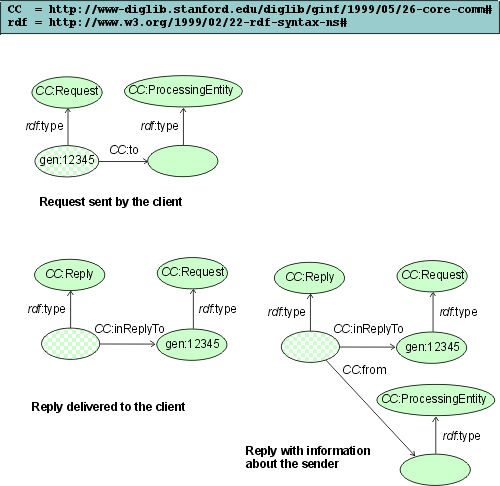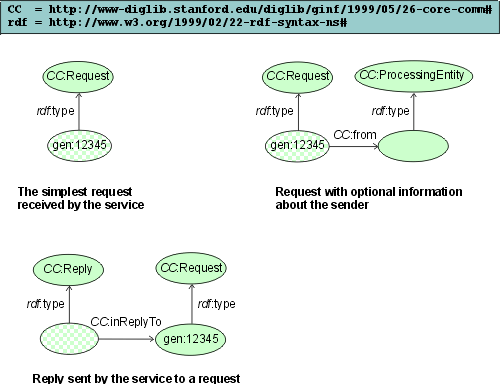Working Draft
Core communication
[RDF Schema]
Request-reply model
The foundation of the core communication is the basic request-reply model
common in distributed programming. Request
and Reply are both Messages. The request-reply model
is implemented by the TransportLayer.
Client
A Request submitted by the client is uniquely identified by the
URI of the request instance. The clients must append a to property to the
request specifying the recipient. The recipient is an instance of ProcessingEntity.
The TransportLayer has to figure out how to deliver the Request
to the specified recipient (which protocol mapping to use, how to resolve
the address etc.). Extensibility: the recipient can have additional properties
telling the TransportLayer how to deliver the Request.
Example:

Service
The Request that the service gets carries a URI that uniquely identifies
the request. To reply, the service has to attach the inReplyTo property
to the Reply that identifies the request to which the reply belongs
to.
If the service requires knowledge about who sent the request, it has
to initialize the TransportLayer specifying this particular mode
of operation. If this option is specified the TransportLayer will
append from property to every Request that it passes to the
service. The from property will point to an instance of ProcessingEntity.
The URI of this instance depends on the underlying protocol mapping (URL,
IOR etc.).
Example:

Transport Layer
The TransportLayer may use different policies and protocols mappings.
For example, it may send a message via an HTTPLayer or TCPIPLayer
depending on the destination specification. TransportLayer abstracts
out from the underlying protocol mappings. Thus, it does not provide any
guarantees about whether the message will be sent using a connection-oriented
or a connectionless method. A particular implementation of the TransportLayer
may provide appropriate customization options, e.g. setting of connection
timeouts etc.
See also: Core Communication,
Basic State Maintenance, HTTP,
TCP/IP
Sergey Melnik.
Last modified: 06/01/99


